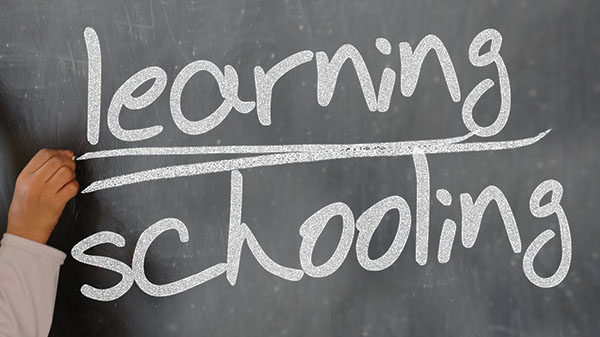By Dr. Leon Barrett
PRIDE Columnist
 In my last commentary I indicated that I will be presenting and discussing issues to help, especially parents and their children, to understand, navigate and be successful in the education system and, by extension, life.
In my last commentary I indicated that I will be presenting and discussing issues to help, especially parents and their children, to understand, navigate and be successful in the education system and, by extension, life.
Here I will briefly review the structure of the education and school systems in Ontario, as this has important implications for the participation of parents and their children.
Schools are important avenues for the formal education of students. The education process requires not only the participation of students but other stakeholders as well, including parents.
To help facilitate this participation, education is generally organized in a given structure for easier delivery. For effective participation then, it is helpful if stakeholders have a knowledge of the structure.
In Canada the structure of the education system may vary with region and jurisdiction, given who is responsible for the delivery of education. Under the constitution of Canada, education is a provincial responsibility. So there is no federal ministry of education. The federal government, however, may give each province a financial grant for education.
Each province, among other things, defines its philosophy of education, determines the structure of the education system, decides how the system works, decides who participates, and what is taught (curricula).
The Education Act or law of each province acts as a guide for the system.
A rough outline of the structure of the public education system in Ontario is:
- Ministry of Education that defines educational policies, finances education, issues curricula;
- District School Board, which interprets and implements ministry policies, defines some educational policies, and operates elementary and secondary schools;
- Director of Education, who is responsible for the operation and supervision of all schools in the particular district school board;
- Superintendent, who is responsible for the operation and supervision of all schools in a particular geographic area within the district school board; and
- Principal, who is responsible for the operation of a school in a particular superintendency.
There is also the Ministry of Training, Colleges and Universities that focuses on post-secondary education.
Then there is the structure of the public school system. This is made up of elementary and secondary schools. In Ontario the school system generally has seven levels, each with its particular focus and emphasis.
At the first level is Kindergarten (Junior and Senior). This is supposed to be the children’s introduction to the formal education process. The focus is socialization and learning through discovery. There is also the introduction of literacy and numeracy.
The next level is Primary (Grades 1 to 3). The focus is literacy and numeracy. Teachers used to be advised that about 60% of the instructional time be spent on literacy and numeracy.
 Towards the end of Grade 3, virtually all Grade 3 students are required to write the Primary Assessment tests (formally the Grade 3 EQAO Assessment). The subjects covered are Reading, Writing and Mathematics. This assessment is meant to give an indication of how well the students are mastering the curricula so far.
Towards the end of Grade 3, virtually all Grade 3 students are required to write the Primary Assessment tests (formally the Grade 3 EQAO Assessment). The subjects covered are Reading, Writing and Mathematics. This assessment is meant to give an indication of how well the students are mastering the curricula so far.
Junior (Grades 4 to 6) is the next level. The focus is on the consolidation and expansion of literacy and numeracy. There is also the expansion of other subjects.
Near the end of Grade 6, virtually all Grade 6 students are required to write the Junior Assessment (formally Grade 6 EQAO Assessment) in Reading, Writing and Mathematics. This assessment too, is intended to give an indication of how well the students are mastering the curricula up to this point.
Intermediate (Grades 7 and 8) is the highest level of the elementary division. Grades 7 and 8 are regarded as the transition years. They are transition from elementary to secondary education. They are to consolidate learning from kindergarten to Grade 8, and prepare students for their high school experiences.
At the secondary school division, Intermediate (Grades 9 and 10) is the first level. This is the start of the credit system, where students are expected to pass a number of subjects to graduate with an Ontario Secondary School Diploma. Successful completion of a subject is one credit. Grades 9 and 10 also lay the foundation for specialization at the Senior level (Grades 11 and 12) and for post-secondary training.
Towards the end of Grade 9, virtually all Grade 9 students are required to write the Grade 9 EQAO Mathematics Test. This assessment is intended to give an indication of how well the students are mastering the mathematics curricula to this point. Toward the end of Grade 10 students are required to write the Ontario Secondary School Literacy Test, which they must pass to graduate from high school with their Ontario Secondary School Diploma.
The last level of the school system is Senior (Grades 11 and 12). Here students pursue the university track, the college track, or the workplace preparation (vocational) track.
In the follow-up I will briefly review curricula issues and high school graduation requirements.
Dr. Barrett is a retired Peel Region District Board teacher and educator.
 Pride News Canada's Leader In African Canadian & Caribbean News, Views & Lifestyle
Pride News Canada's Leader In African Canadian & Caribbean News, Views & Lifestyle






Your sharing of information on the education system in Canada is so critical to especially immigrants. As I read your post, I think more about the progress of my children in this current system. This post does help me understand more the education system and gives me a better view of how to navigate my children through. I look forward to reading more and exploring my thoughts and actions in seeing my children succeed.